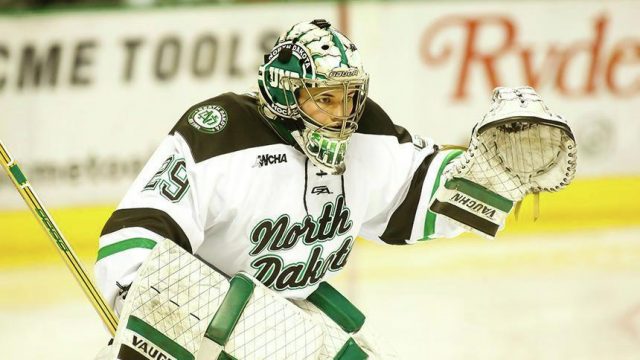You Can’t Write Sad, Sad Stories About Women’s Hockey at UND Without Talking About the Money

UND's Lexie Shaw prepares for a goal attempt by Bemidji State University during the 2nd period of Saturday's game at the Ralph Engelstad Arena. Photo by Nick Nelson for the Grand Forks Herald.

The New York Times recently published a story about the end of the women’s hockey program at the University of North Dakota. It was published in the Times on the 10th, and has been republished here in North Dakota by my employers at Forum Communications today.
The story aims to evoke sympathy over the demise of the program, which is understandable because a lot of people are very passionate about girls and women playing hockey. But there’s a big problem with the story in that it doesn’t provide readers with any details information about the financial realities of women’s hockey at UND.
The article mentions that the program was cut as a part of the measures implemented by university administrators to address budget shortfalls, but it doesn’t detail the fact that women’s hockey was losing UND millions of dollars.
The women’s hockey team sold just over $25,000 worth of tickets in 2016 per disclosures the university must make to the NCAA (see below). Overall the program generated just over $212,000 worth of revenue, and we only reach that figure if we generously count more than $158,000 of “institutional support” as generated revenue instead of the subsidy it is.
Contrast that pittance with the more than $2.1 million in expenses the program incurred in 2016 and you begin to see the problem.
The more than $2 million the University of North Dakota lost on women’s hockey was the second most lost by any sport (behind men’s football).
Overall athletic programs at UND lost over $13.3 million in 2016, a shortfall which fell as a burden onto taxpayers and students.
That is an enormous fiscal distraction from the academic mission of UND.
The New York Times is reporting a story about how important the women’s hockey program was. But if it was so important, why didn’t more people go to the games? Why didn’t more boosters step up to support the program financially?
Unfortunately many (most?) in the public are ok with sports programs making the cost of higher education higher than it needs to be. Americans generally, and North Dakotans specifically, are fanatical about sports.
Be that as it may, if we’re going to have an honest discussion about collegiate sports, whether it’s women’s hockey or any other program, the mathematical reality of the finances behind those programs must be a part of it.




